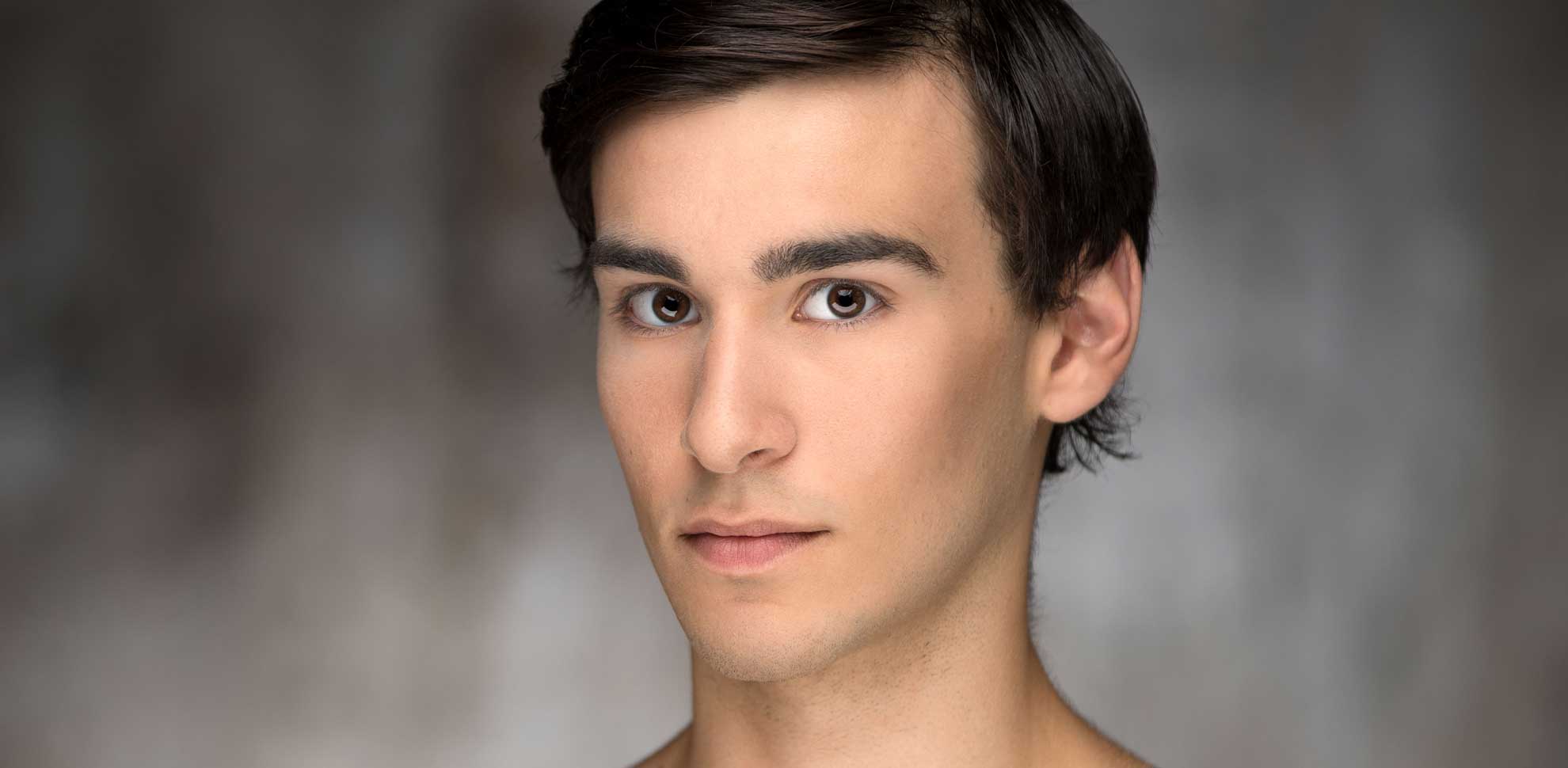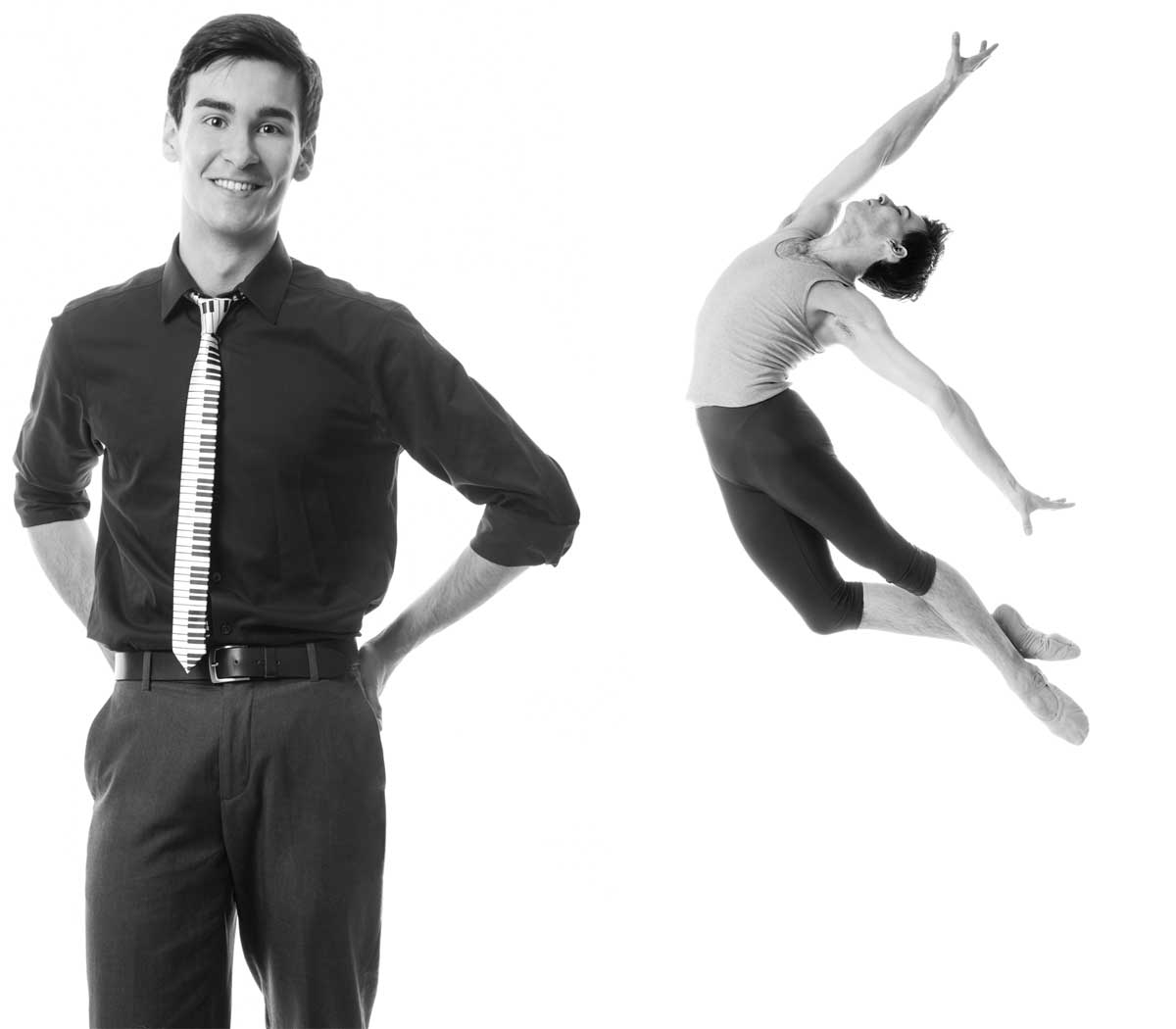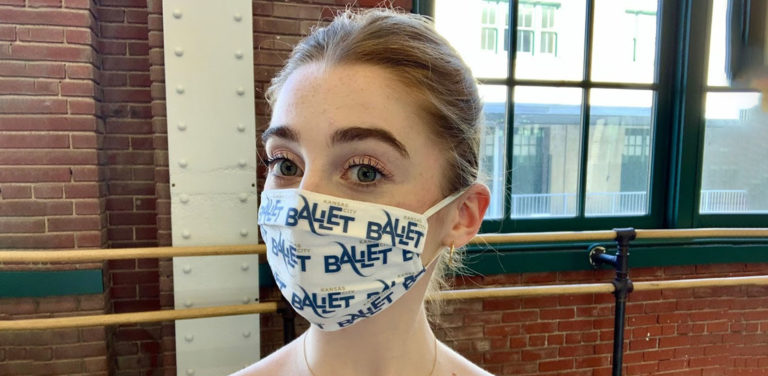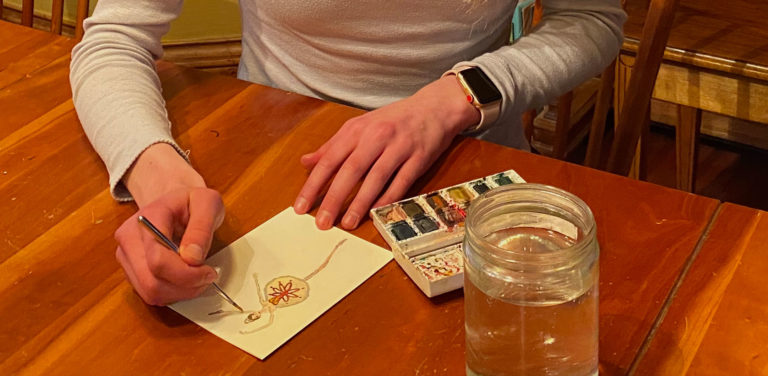Kansas City Ballet company dancer Cameron Thomas started playing the piano around 6 or 7 years old. Encouraged by his parents, he took lessons until ninth grade and then continued studying music through school orchestra, music theory classes, and even independently. Playing music has since evolved into a sort of hobby/passion project. In September, Kansas City Ballet Music Director Ramona Pansegrau hired him as a part-time accompanist for Kansas City Ballet School.
We asked Cameron about his experience on the piano bench and he had plenty to say.
Q: WHAT DO YOU ENJOY ABOUT PLAYING MUSIC?
A: It has always been something I do just for me without pressure or obligation. Ballet is my passion for sure, but it is also a very demanding and often stressful job. Don’t get me wrong—dance is well worth it, especially at a place like Kansas City Ballet, but it’s also nice to have music as both an escape and a means to make myself and others smile once in a while… It’s fun!
Q: MUSIC AND DANCE JUST GO TOGETHER. DOES BEING TALENTED AT BOTH MAKE IT DIFFICULT TO FOCUS ON ONE OR THE OTHER?
A: If I were seriously pursuing music, it would be very difficult to balance it with ballet. Any discipline like ballet demands a fairly exclusive commitment at the professional level. However, I was fortunate enough to build at least a decent understanding of music from a relatively early age, which has allowed me to more passively improve my own skills at the piano over a longer period of time. I have had stretches where I play often and see improvements, but also times when my workload demands I stop playing for a while. Over several years, I felt I had built a small repertoire of music I could use to play for ballet class, and our music director Ramona Pansegrau was kind enough to give me a shot. So far, so good.
Q: PLAYING PIANO FOR BALLET CLASS IS NOT AS EASY AS IT SOUNDS. WHAT HAS BEEN THE BIGGEST CHALLENGE FOR YOU? WHAT HAVE YOU ENJOYED MOST ABOUT PLAYING FOR CLASSES?
A: Playing for ballet class is definitely not easy for a number of reasons beyond just knowing how to play the piano. Coming from a background of ballet, my challenge is probably different than that of most accompanists. Often, the challenging part for a pianist is identifying what the appropriate time signature, tempo, quality, duration, or phrasing of a piece of music should be so that it actually works with a given combination. Of course, good accompanists do this easily, but I would imagine it is a steep learning curve for those who are new to the vocabulary and structure of a ballet class. Conveniently for me, I am very familiar with ballet, so that part has come fairly easily! My challenge is the opposite. Finding new music or tailoring music I already know to fit the needs of ballet combinations was harder for me as I have far less repertoire than a professional pianist. Also I’ll openly admit, I have some limitations with how well I can actually play difficult music. Luckily I listen and learn from the best every single day in class! Ramona has also been very helpful in providing me resources to help me out.
Q: HOW DOES BEING A BALLET DANCER HELP WHEN PLAYING FOR BALLET CLASS?
A: Huge yes, as I said in the last answer. It’s way easier to figure out what to play for a given combination when you know the dancer’s perspective. I find I can often anticipate what exercise is coming next, what tempo is appropriate, or how to phrase the music much more easily because I’ve taken so many ballet classes as a dancer.
Q: WHEN YOU HEAR A GORGEOUS PIECE OF MUSIC, WHAT COMES FIRST FOR YOU, IMAGINING DANCING TO IT OR PLAYING IT?
A: That’s such an interesting question. Definitely playing it, or at least listening to it in an active, constructive way. Though music is probably the single most significant inspiration for movement, I am usually just listening, not creating original movement. Maybe that’s why I don’t have the choreographic bug. Interpreting a choreographer’s vision of that music through movement is the really amazing part for me, but it is often the most challenging. The way choreographers interpret music is often remarkably dissimilar from the way the music itself is written. Sometimes it is challenging to hear more complicated music one way and have it set to movement in a contradictory way, but that is the case for all dancers. Having a deep understanding of music really helps that process.
Q: FOR WHICH CLASSES DO YOU PLAY? HOW DO STUDENTS RESPOND WHEN THEY REALIZE YOU ARE A PROFESSIONAL COMPANY DANCER?
A: I play for our community engagement students from the R.O.A.D. (Reach out and Dance) program on Wednesdays and the adult beginner open class on Thursdays. The R.O.A.D. kids are young (9-10 years old) so honestly they’re not always the most aware of the fact that I’m a professional dancer and what that might mean besides the fact that I dance a lot. They do love the music though, it does not go unnoticed. The adults really enjoy it; they often ask about how I am doing or what the company is working on. They also know that I am relatively new to accompaniment as they are to ballet, and so it creates a light, fun environment.
Q: HAS ANYTHING SURPRISED YOU ABOUT PLAYING FOR CLASSES?
A: What’s most surprising is how gratifying it has been. Sadly, and I am guilty of this as well, most professional dancers are so accustomed to live music in the classroom that it has become an expectation. We are far more inclined to notice when there is either something wrong with the music being played or no live accompaniment at all. That has not been my experience with my classes thus far. In the classes I play, live accompaniment is a novelty. They greet me with smiles and positive feedback, sometimes even between combinations. I am grateful to have the opportunity to play for them.
Q: IS THERE ANYTHING ELSE YOU’D LIKE TO SHARE ABOUT YOUR EXPERIENCES?
A: Live music makes ballet class of all skill levels better. If done well, it changes the entire dynamic of a room and can make the class infinitely more productive and enjoyable. We are lucky to have it here at Kansas City Ballet and I am so excited to learn how to hopefully bring that to a classroom myself.
Top photo by Tom Styrkowicz and 53Tom, LLC.




